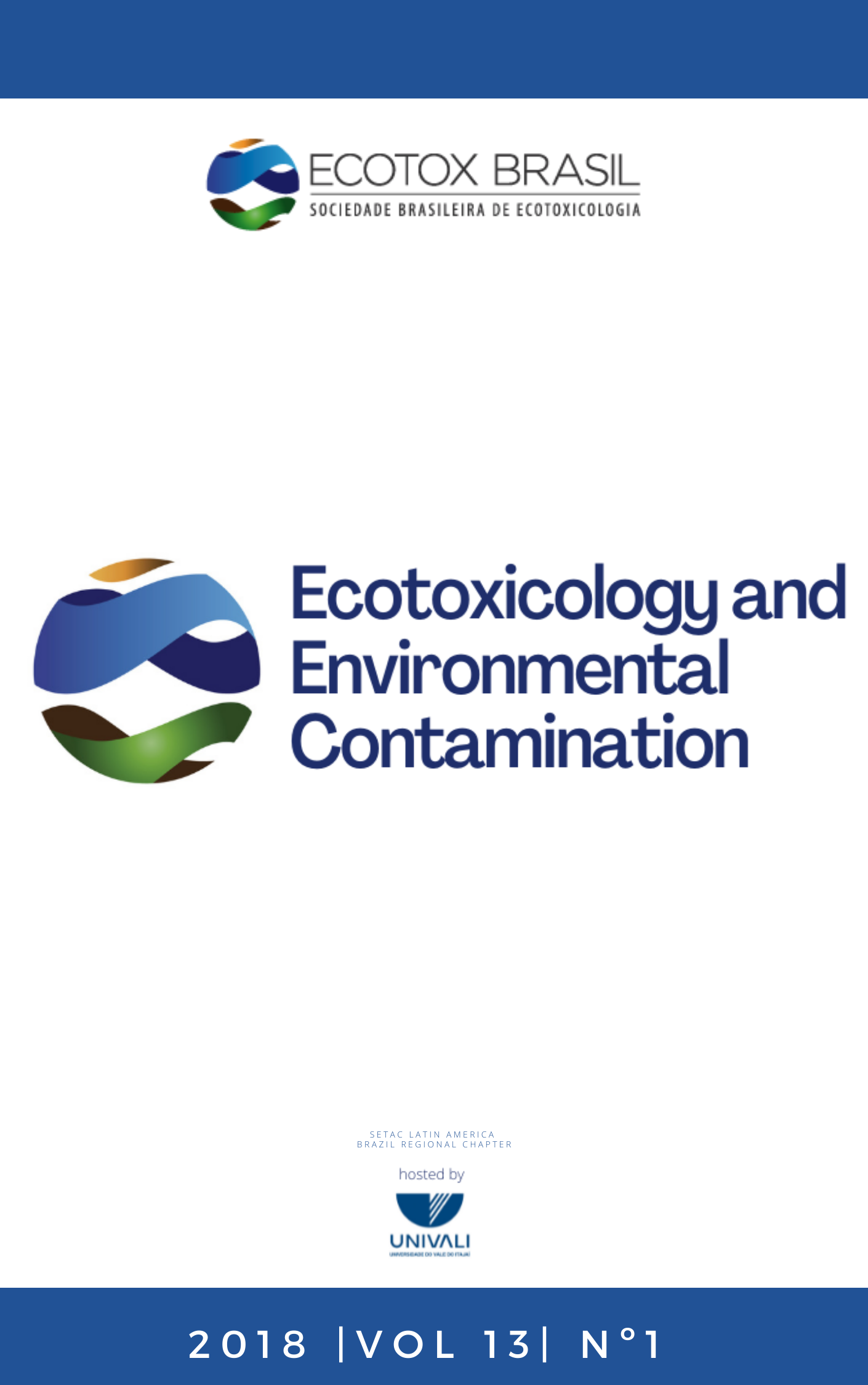Trace elements in an adjacent channel of an anthropized area: a case study of Baixada Santista, Southeastern Brazil
DOI:
https://doi.org/10.5132/eec.2018.01.03Abstract
In recent decades, due to intensive industrialization, the Baixada Santista has undergone an intense process of environmental degradation. The metals are toxic and persistent in varying concentrations and oxidation states and may be incorporated in sediments and biota. Thus, understanding the importance of this contamination is necessary for coastal planning. This study provides a basis for understanding the levels of metal and As contamination in the Bertioga Channel (SP). The levels of Al, As, Cd, Cr, Cu, Fe, Mn, Ni, Pb, Sc, V and Zn in superficial sediment samples were determined by ICP-OES. The degree of sediment contamination was evaluated according to the sediment quality standards set by the Canadian environmental agency (ISQG and PEL) and by statistical tests. All values were below PEL, and most of the sample values were below ISQG, except for As, Cu and Pb. From a cluster analysis, it was possible to differentiate eastern and western parts of the channel due to their distinct hydrodynamic patterns. Furthermore, it was possible to separate the trace elements by geochemical behavior, in which Cu, Pb and Zn were linked to a small anthropogenic contribution. Thus, this study detected small anthropogenic contributions from an adjacent channel of an anthropized area, but most of the results were linked to natural geochemical processes.Downloads
Downloads
Published
How to Cite
Issue
Section
License
Copyright © 2006 ECOTOX-Brasil
Copyright notice: It is a condition for publication that manuscripts submitted to this journal have not yet been published and will not be simultaneously submitted or published elsewhere. By submitting a manuscript, the authors agree that copyright for their article is transferred to the Sociedade Brasileira de Ecotoxicologia (ECOTOX-Brasil) if and when the article is accepted for publication. The copyright covers the exclusive rights to reproduce and distribute articles, including reprints, photographic reproductions or any other reproduction of a similar nature, including translations. No part of this publication may be reproduced, stored in a retrieval system or transmitted in any form or by any means, electronic, mechanical, photocopying, recording or otherwise, without permission of the publisher.
Notice: While every effort is made by the EEC, editors and editorial board to see that no inaccurate or misleading data, opinions or statements appear in this journal, they wish to make it clear that the contents of the articles and advertisements published herein are the sole responsibility of the contributors or advertisers concerned. Accordingly, the EEC, the editorial board and editors and their respective employees, officers and agents accept no responsibility or liability whatsoever for the consequences of any inaccurate or misleading data, opinion or statement.




